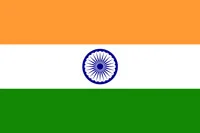Filtered Water Faucets & Faucet Systems Market Size, Share, Trends, Growth, and Industry Analysis, By Product Type (Filtered Water Faucets, and Faucet Systems), By Technology (Carbon Filtration, Reverse Osmosis, Ultraviolet (UV) Filtration, Ceramic Filtration, Multi-Stage Filtration), By Material (Stainless Steel, Plastic, Brass, Other Alloys), By Distribution Channel (Online Retail, Offline Retail), By End-User (Residential, Commercial, Industrial), By Price Range (Low Price, Mid Price, High Price), Regional Analysis and Forecast 2032.
STUDY PERIOD: 2019-2032
BASE YEAR: 2023
HISTORICAL DATA: 2019-2022
Global Filtered Water Faucets & Faucet Systems Market size was USD 6.83 billion in 2023 and the market is projected to touch USD 11.03 billion by 2032, at a CAGR of 6.17% during the forecast period.
The filtered water faucets and faucet systems market involves products that make potable and safe drinking water available directly through a tap. All these faucets make use of filtration technologies to eliminate chlorine, lead, and bacteria to ensure the water is safe and palatable. While growing public concern with the water quality and health issues continues to raise demand for easy and cheap home purification solutions of drinking water, the global filtered water faucets and faucet systems market will continue to evolve.
There are a few factors driving this market: an increased health-consciousness among consumers, the need to reduce the contribution plastics used as water bottles make in waste, and increased pressure to preserve resources. With people continually looking for more environmentally friendly options, a filtered water faucet is the final alternative to using single-use plastic bottles. In addition, filtration technologies are becoming both efficient and user-friendly. Indeed, apart from the reasons discussed, other factors that can be instrumental in bringing about such massive growth of this market are innovation in designs, expansion of retail channels, and increased demand in both residential and commercial sectors
Filtered Water Faucets & Faucet Systems Report Scope and Segmentation.
|
Report Attribute |
Details |
|
Estimated Market Value (2023) |
USD 6.83 Billion |
|
Projected Market Value (2032) |
USD 11.03 Billion |
|
Base Year |
2023 |
|
Historical Year |
2018-2022 |
|
Forecast Years |
2024 – 2032 |
|
Scope of the Report |
Historical and Forecast Trends, Industry Drivers and Constraints, Historical and Forecast Market Analysis by Segment- Based on By Product Type, By Technology, By Material, By Distribution Channel, By End-User, By Price Range, & Region. |
|
Segments Covered |
By Product Type, By Technology, By Material, By Distribution Channel, By End-User, By Price Range, & By Region. |
|
Forecast Units |
Value (USD Million or Billion), and Volume (Units) |
|
Quantitative Units |
Revenue in USD million/billion and CAGR from 2024 to 2032. |
|
Regions Covered |
North America, Europe, Asia Pacific, Latin America, and Middle East & Africa. |
|
Countries Covered |
U.S., Canada, Mexico, U.K., Germany, France, Italy, Spain, China, India, Japan, South Korea, Brazil, Argentina, GCC Countries, and South Africa, among others. |
|
Report Coverage |
Market growth drivers, restraints, opportunities, Porter’s five forces analysis, PEST analysis, value chain analysis, regulatory landscape, market attractiveness analysis by segments and region, company market share analysis. |
|
Delivery Format |
Delivered as an attached PDF and Excel through email, according to the purchase option. |
Dynamic Insights
Some of the major drivers are rising consumer health awareness, whereby consumers are getting more aware of the importance of clean drinking water. Worries over impurities in tap water, such as heavy metals, bacteria, and others, are motivating households to invest in filtration solutions. Another driving factor is the rise in the aspect of sustainability, as consumers are seeking environmentally friendly alternatives to bottled water to reduce plastic waste.
On the other hand, higher costs of installation and maintenance of filtration systems, among others, could act as restrictions in the growth of the market. Moreover, some consumers would be less informed of the benefits involved with filtered water faucets; hence, there will be slower adaptation in some regions. Technological innovations are now in a position to solve the given issues by improving the efficiency, cost-effectiveness, and easier usage of the filtration system. A spur to market growth is expected to come as manufacturers continue to innovate and offer diverse product options, supported by increasing distribution channels, an increasing focus on health and wellness, and the adoption of healthy lifestyles that people around the world increasingly embrace.
Drivers Insights
- Health Consciousness
Major drivers of the global filtered water faucets and faucet systems market are growing health and wellness awareness. Consumers begin to develop concern about drinking water quality and most realize the existence of harmful additives in tap water such as lead, chlorine, and bacteria. This increased awareness means an increased requirement for filtration systems that can provide clean, safe drinking water at the tap. As well, as people are educated more about hazards to their health because of impure water, they are more liable to spend on filtered water solutions to make certain that the health of their families is not compromised. This is where the consumer pattern is affecting the market as people want to lead healthy lives by purifying their drinking water.
- Sustainability and Environmental Awareness
Another critical driver includes the emerging shift toward sustainability and reduced plastic waste. Consumers are now looking for an alternative to single-use bottles of water as the world witnessed an environmental crisis through a rise in plastic pollution. This product is giving households a sustainable solution wherein consumers tap, filter, and drink clean water at home without depending on the need for single-use plastic bottles. This green approach, while good for the environment, also attracts a consumer very conscious of his or her living off their carbon footprint. Filtered water faucets in turn are gaining popularity among consumers embracing sustainable practices within their everyday lives.
Restraints Insights
- High Initial Costs
One of the primary restraints affecting the growth of the filtered water faucets and faucet systems market is the high initial cost of installation. Many consumers perceive these systems as expensive, which can deter potential buyers from making the investment. Although long-term savings and health benefits may offset these costs, the upfront price can be a significant barrier for budget-conscious consumers. This restraint is particularly prevalent in developing regions where disposable income is lower, limiting the market's penetration in these areas.
- Limited Awareness
Another significant restraint is the limited awareness and understanding of the benefits of filtered water faucets among certain consumer segments. Many people are still unaware of the quality issues associated with tap water and the advantages of using filtration systems. This lack of knowledge can result in slower adoption rates, especially in regions where access to clean water has not been a prevalent concern. To overcome this restraint, manufacturers and retailers must invest in educational campaigns to inform consumers about the importance of water filtration and the benefits of using filtered water faucets.
Opportunities Insights
- Technological Advancements
Filtration technologies are constantly being improved, which opens up many opportunities in the market. New smart filters now monitor water quality and filter performances in real-time to give users greater comfort and reliability in the filtration process. Filtered water systems are also influenced by fashion, like the newest compact faucet designs that appeal more to modern consumers for household purposes. The manufacturer can bring out larger crowds and spur market growth by continuing its efforts in innovation and feature inclusion for the product.
Segment Analysis
- By Product Type
The global filtered water faucets and faucet systems market is categorized into two primary product types: filtered water faucets and faucet systems. Filtered water faucets are standalone units designed to provide clean drinking water directly from the tap. They typically feature built-in filters that remove contaminants and improve water taste. These faucets are popular among consumers looking for convenient and efficient solutions for their drinking water needs. On the other hand, faucet systems encompass more comprehensive filtration solutions that may include multiple components, such as pre-filters and post-filters, designed to ensure a higher level of water purity. These systems can be integrated into existing plumbing and often provide a broader range of filtration options, catering to diverse consumer preferences and requirements. Together, these product types reflect the growing demand for accessible and effective drinking water solutions.
- By Technology
Some of the technologies applied in filtration in the marketplace include carbon filtration, reverse osmosis, ultraviolet filtration, ceramic filtration, and multi-stage filtration. Carbon filtration is one of the popular filtration techniques used on residential filtered water faucets since it takes out chlorine, VOCs, and bad tastes. The other commonly used technology is reverse osmosis that utilizes a semi-permeable membrane to remove a wide range of contaminants, including dissolved solids and heavy metals, to provide good quality water. UV filtration kills bacteria and viruses with ultraviolet light; ceramic filtration uses a porous ceramic material to simply block contaminants from passing through. Multi-stage filtration employs a series of techniques to ensure improved overall quality. Therefore, it presents an answer to the customers' needs in terms of purity levels. In this sense, it enables the selection of the appropriate method of filtration suited to the needs of the water quality.
- By Material
The materials used in the construction of filtered water faucets and faucet systems play a significant role in product durability, safety, and aesthetics. The primary materials in this market include stainless steel, plastic, brass, and other alloys. Stainless steel is favoured for its corrosion resistance, strength, and sleek appearance, making it a popular choice for high-end faucets. Plastic materials are lightweight and often more affordable, appealing to budget-conscious consumers. Brass, known for its durability and resistance to corrosion, is commonly used in faucet manufacturing, providing a traditional and classic look. Other alloys may also be utilized to enhance performance and longevity. The choice of material influences not only the product's longevity and maintenance requirements but also its aesthetic appeal, allowing consumers to select faucets that complement their kitchen or bathroom designs.
- By Distribution Channel
Distribution channels for filtered water faucets and faucet systems are crucial for market accessibility and consumer reach, encompassing both online and offline retail options. Online retail has gained significant traction in recent years, driven by the convenience of e-commerce and the ability to compare various products easily. Consumers can access a wide range of options, read reviews, and benefit from competitive pricing through online platforms. Meanwhile, offline retail, including home improvement stores, plumbing supply shops, and appliance retailers, continues to play an essential role in the market. These physical stores offer the advantage of direct customer service and the opportunity to see products in person, enabling consumers to make informed purchasing decisions. The combination of online and offline distribution channels allows manufacturers to cater to diverse consumer preferences and enhance overall market penetration.
- By End-User
The filtered water faucets and faucet systems market serves various end-user segments, including residential, commercial, and industrial applications. In the residential sector, consumers are increasingly adopting these systems to ensure access to clean drinking water for their families, leading to rising demand for both standalone faucets and integrated filtration systems. Commercial establishments, such as restaurants, cafes, and offices, also seek filtered water solutions to provide high-quality drinking water to employees and customers, often opting for more robust filtration systems to meet higher consumption demands. Additionally, industrial applications require advanced filtration technologies to ensure process water quality and compliance with health regulations.
Regional Analysis
The North America market is one of the most prominent, driven by health and wellness awareness in consumers and strict regulations on the quality of water. Demand in high-end filtration technologies is robust in the United States and Canada. Consumers are seeking greener solutions to minimize plastic waste from bottled water. Established manufacturers with a wider spread of product lines give muscle to this market region.
There is also staggering growth seen in the European market, which is driven by an increased emphasis on sustainability and concern for the environment. Germany, the UK, and France are leading the adoption of water faucet and system due to the consumers' desire to improve water quality as well as help the overall ecological footprint. An emerging market is the Asia-Pacific region, which is influenced by rising disposable incomes, urbanization, and better awareness of waterborne diseases. The need for clean and safe drinking water is growing in China and India, with this having a considerable resultant demand for affordable and effective solutions in water filtration - a growth driver for manufacturers. Latin America and the Middle East & Africa are also a growth area, although with a slower pace, driven by better infrastructure and rising health consciousness, which typically tends to improve market conditions over time.
Competitive Landscape
The key players in this market are firms such as Kohler Co., Moen, Delta Faucet Company, and Culligan International offering a wide range of innovative products catering to different preferences of consumers. In order to maintain market position, companies operating in the water purification market rely upon advances in filtration technologies, product designs, and reputation of the brand. Strategic partnership, acquisition, and cooperation with other firms is also common with such companies to increase product portfolios and expand their reach in the market.
Apart from the well-known brands, there are increasingly more start-ups and small companies extending their business to the market. The profile of these players is mostly at the niche level or eco-friendly in order to differentiate themselves. Focus areas for these players generally include sustainability and design, which tends to attract more environmentally aware consumers. Further determination of the competitive landscape includes rapid technological advancement, where firms invest in research and development so that cutting-edge filtration technologies like multi-stage filtration and smart filtration systems can be introduced. Furthermore, some very effective marketing strategies, including online promotions and customer engagement initiatives, are also important to capture the market. As the consumer awareness of issues concerning the quality and health of water continues to grow, the competition in the market of filtered water faucets and faucet systems will gain momentum, compelling innovation and growth throughout the industry.
List of Key Players:
- Billi
- Masco (Newport Brass)
- WESTBRASS
- Freshwatersystem
- LIXIL Group (GROHE)
- Aloys F. Dornbracht
- Ferguson
- Franke
Recent Developments:
- Aug 2023, BLANCO, the premium kitchen solutions brand renowned for its industry-leading German engineering and the customizable BLANCO UNIT—featuring a combination of sink, faucet, and accessories—has introduced the new CATRIS Flexo Filter faucet. This innovative addition to BLANCO's faucet line-up is North America's first filter-ready faucet, providing easy access to filtered water right at the kitchen sink for drinking, food preparation, and filling pots for cooking, among other uses.
Filtered Water Faucets & Faucet Systems Report Segmentation:
|
ATTRIBUTE |
DETAILS |
|
By Product Type |
|
|
By Technology |
|
|
By Material |
|
|
By Distribution Channel |
|
|
By End-User |
|
|
By Price Range |
|
|
By Geography |
|
|
Customization Scope |
|
|
Pricing |
|
Objectives of the Study
The objectives of the study are summarized in 5 stages. They are as mentioned below:
- Global Filtered Water Faucets & Faucet Systems size and forecast: To identify and estimate the market size for global Filtered Water Faucets & Faucet Systems market segmented By Product Type, By Technology, By Material, By Distribution Channel, By End-User, By Price Range, and by region. Also, to understand the consumption/ demand created by consumers between 2024 and 2032.
- Market Landscape and Trends: To identify and infer the drivers, restraints, opportunities, and challenges for global Filtered Water Faucets & Faucet Systems
- Market Influencing Factors: To find out the factors which are affecting the market of global Filtered Water Faucets & Faucet Systems among consumers.
- Company Profiling: To provide a detailed insight into the major companies operating in the market. The profiling will include the financial health of the company's past 2-3 years with segmental and regional revenue breakup, product offering, recent developments, SWOT analysis, and key strategies.
Frequently Asked Questions
Request For Table of Content
Research Methodology
Multi-report Purchase Plan
A Customized Plan Will be Created Based on the number of reports you wish to purchase
InquireRelated Reports
Client Testimonials
“We value your excellent customer service, promptness in responding, flexibility in customizing reports, and pleasant manner in general. ”
June S. Lee - SBIC/SBP&T Co.,Ltd
“The study and the services provided by Econ Research have more than met my expectations. The study has good depth and breadth and was reasonably priced. Instant responses to my questions delighted me, and the project went off without a hitch. When I require information about a different industry to help my clients, Econ Research would be the first market research firm I would get in touch with.”
Dan Dybus - AlixPartners


